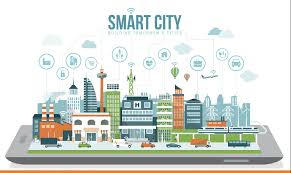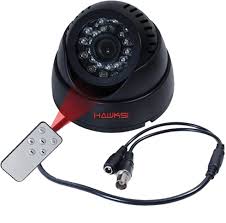Smart City Solutions: The Future of Urban Living
As cities continue to grow and expand, the need for more efficient and sustainable solutions becomes increasingly important. Smart city solutions are a response to this need, offering innovative technologies and systems that can help cities become more connected, efficient, and sustainable.
So, what exactly are smart city solutions? At their core, they involve the use of advanced technologies such as the Internet of Things (IoT), artificial intelligence (AI), and big data analytics to improve various aspects of urban life. For example, smart city solutions can help reduce traffic congestion, improve public safety, enhance energy efficiency, and provide better access to public services.
One area where smart city solutions have already made a significant impact is transportation. With the rise of ride-sharing services like Uber and Lyft, as well as the development of autonomous vehicles, cities are exploring new ways to manage traffic flow and reduce congestion. Smart traffic management systems use real-time data from sensors embedded in roads and vehicles to optimize traffic flow and reduce travel time.
Another area where smart city solutions are making a difference is public safety. Advanced security systems that use AI-powered video analytics can help detect potential threats in real-time and alert authorities before any harm is done. Smart lighting systems that adjust their brightness based on pedestrian traffic can also contribute to improved safety by reducing dark spots in urban areas.
Energy efficiency is another key area where smart city solutions are making significant strides. By using IoT-enabled devices that monitor energy consumption in buildings and public spaces, cities can reduce waste and save money on utility bills. Smart grids that use machine learning algorithms to predict energy demand can also help utilities better manage their resources.
Finally, smart city solutions can also improve access to public services like healthcare and education. Telemedicine platforms enable patients in remote areas to receive medical care without having to travel long distances. Smart classrooms equipped with interactive displays and virtual reality technology can provide students with immersive learning experiences that are more engaging and effective.
In conclusion, smart city solutions offer a promising way forward for cities looking to become more connected, efficient, and sustainable. By leveraging the latest technologies and systems, cities can improve transportation, public safety, energy efficiency, and access to public services. As more cities around the world adopt smart city solutions, we can expect to see significant improvements in the quality of urban life for all.
8 Smart City Solutions for Improved Citizen Engagement and Sustainable Development
- Leverage technology to improve citizen engagement and access to services.
- Develop a comprehensive plan for smart city infrastructure that includes data collection, storage, and analysis capabilities.
- Utilize the Internet of Things (IoT) to enable smarter urban planning and management decisions.
- Invest in energy efficient building solutions such as LED lighting, renewable energy sources, and smart grid systems.
- Create a secure digital environment with robust cyber security protocols in place to protect citizens’ data privacy rights and ensure public safety online.
- Use predictive analytics to anticipate emerging trends and develop proactive strategies for addressing them before they become problems in the cityscape or community life
- Leverage artificial intelligence (AI) solutions such as facial recognition software or natural language processing tools to improve public safety initiatives or streamline administrative processes
- Encourage collaboration between local governments, businesses, universities, nonprofits, and other stakeholders to create an ecosystem of innovation that drives sustainable development in the city
Leverage technology to improve citizen engagement and access to services.
Leveraging Technology to Improve Citizen Engagement and Access to Services in Smart Cities
One of the key benefits of smart city solutions is the ability to improve citizen engagement and access to services. By leveraging technology, cities can create more efficient and convenient ways for citizens to interact with their local government and access essential services.
One way that technology can improve citizen engagement is through the use of mobile apps. Smart city apps can provide citizens with real-time information on everything from public transportation schedules to upcoming events in their community. They can also enable citizens to report issues like potholes or broken streetlights directly to their local government, making it easier for officials to address these problems quickly.
Another way that technology can improve citizen engagement is through the use of social media. Platforms like Facebook and Twitter can be used by cities to communicate with citizens, share information about upcoming events or initiatives, and solicit feedback on important issues. Social media can also be used as a tool for citizen-driven initiatives, such as crowdfunding campaigns or community-led projects.
In addition to improving citizen engagement, technology can also make it easier for citizens to access essential services. For example, smart city solutions like e-governance portals enable citizens to pay bills or taxes online, eliminating the need for them to stand in long queues at government offices. Mobile healthcare apps enable patients to schedule appointments with doctors or access medical advice remotely, while online education platforms provide students with access to high-quality educational resources regardless of their location.
In conclusion, leveraging technology is an essential aspect of creating smart cities that are more responsive and accessible for citizens. By using mobile apps, social media platforms, e-governance portals, and other digital tools, cities can improve citizen engagement and provide better access to essential services. As more cities around the world adopt these technologies, we can expect to see significant improvements in the quality of life for all citizens.
Develop a comprehensive plan for smart city infrastructure that includes data collection, storage, and analysis capabilities.
Developing a Comprehensive Plan for Smart City Infrastructure
As cities around the world continue to invest in smart city solutions, it’s becoming increasingly important to develop a comprehensive plan for smart city infrastructure. This means not only investing in the latest technologies and systems but also developing the data collection, storage, and analysis capabilities needed to make these solutions effective.
One of the key components of a comprehensive smart city infrastructure plan is data collection. Smart sensors and IoT-enabled devices can provide real-time data on everything from traffic flow to energy consumption, but this data is only useful if it’s collected in a way that’s accurate, reliable, and secure.
Once data is collected, it needs to be stored in a way that’s easily accessible and can be analyzed quickly. Cloud-based storage solutions are often the best option for smart city infrastructure because they provide scalable storage capacity at lower costs than traditional on-premise storage solutions.
Finally, data analysis capabilities are essential for making sense of the vast amounts of data generated by smart city solutions. Advanced analytics tools like machine learning algorithms and predictive modeling can help cities identify patterns and trends in their data that might otherwise go unnoticed.
By developing a comprehensive plan for smart city infrastructure that includes these key components, cities can ensure that their investments in smart city solutions are effective and sustainable over the long term. With accurate data collection, secure storage, and advanced analytics capabilities, cities can make informed decisions about how to improve everything from transportation to public safety to energy efficiency.
Utilize the Internet of Things (IoT) to enable smarter urban planning and management decisions.
The Internet of Things (IoT) is a network of interconnected devices that can communicate with each other and exchange data. In the context of smart city solutions, IoT can be used to enable smarter urban planning and management decisions.
By deploying sensors and other IoT-enabled devices throughout a city, planners and managers can collect real-time data on various aspects of urban life. For example, sensors can be used to monitor traffic flow, air quality, noise levels, and energy consumption. This data can then be analyzed using machine learning algorithms to identify patterns and trends that can inform more informed decision-making.
One example of how IoT is being used for smarter urban planning is the deployment of smart waste management systems. By equipping garbage bins with sensors that monitor their fill level in real-time, waste management companies can optimize their collection routes and reduce unnecessary trips. This not only saves time and money but also reduces carbon emissions from garbage trucks.
Another example is the use of smart lighting systems that adjust their brightness based on pedestrian traffic. By using sensors to detect the presence of people in a given area, these systems can provide adequate lighting while minimizing energy waste.
Overall, utilizing IoT for smarter urban planning and management decisions has enormous potential for improving the quality of life in cities around the world. By collecting real-time data on various aspects of urban life, planners and managers can make more informed decisions that are tailored to the specific needs of their communities.
Invest in energy efficient building solutions such as LED lighting, renewable energy sources, and smart grid systems.
Investing in Energy Efficient Building Solutions: A Smart Move for Smart Cities
As cities around the world continue to grow and expand, the demand for energy is also on the rise. This has led to an urgent need for more sustainable and energy-efficient solutions that can help reduce carbon emissions and save costs. One of the key ways that cities can achieve this goal is by investing in energy-efficient building solutions.
LED lighting is one such solution that has gained popularity in recent years. Compared to traditional lighting systems, LED lights consume up to 80% less energy and last up to 25 times longer. This not only reduces energy consumption but also lowers maintenance costs over time.
Another way to reduce energy consumption is by using renewable energy sources such as solar panels or wind turbines. By harnessing natural sources of energy, cities can reduce their reliance on fossil fuels and decrease their carbon footprint. In addition, renewable energy sources can provide a reliable source of power during emergencies or power outages.
Smart grid systems are yet another solution that can help cities become more energy-efficient. These systems use advanced technologies such as IoT sensors and machine learning algorithms to optimize the distribution of electricity across the grid. By predicting demand patterns and adjusting supply accordingly, smart grids can reduce waste and improve efficiency.
Overall, investing in energy-efficient building solutions is a smart move for smart cities looking to become more sustainable and cost-effective. By adopting technologies like LED lighting, renewable energy sources, and smart grid systems, cities can reduce their carbon footprint while also saving money on utility bills over time. As more cities around the world embrace these solutions, we can expect to see significant improvements in urban sustainability and quality of life for all.
Create a secure digital environment with robust cyber security protocols in place to protect citizens’ data privacy rights and ensure public safety online.
As cities around the world adopt smart city solutions, one critical aspect that cannot be overlooked is cybersecurity. With the increasing amount of data being collected and analyzed by smart city systems, it is essential to create a secure digital environment that protects citizens’ data privacy rights and ensures public safety online.
Robust cybersecurity protocols must be put in place to safeguard against cyber threats such as hacking, data breaches, and other malicious activities. This includes implementing strong encryption measures for sensitive data, using multi-factor authentication for access control, and regularly updating software and systems to address vulnerabilities.
In addition to protecting citizens’ data privacy rights, strong cybersecurity measures are also crucial for ensuring public safety online. Smart city solutions are increasingly being used to monitor public spaces and detect potential threats in real-time. However, these systems can also be vulnerable to cyber attacks that could compromise their effectiveness.
By creating a secure digital environment with robust cybersecurity protocols in place, cities can ensure that their smart city solutions are effective in improving public safety while also protecting citizens’ data privacy rights. It is essential for cities to prioritize cybersecurity as they continue to adopt smart city solutions and work towards building more connected and sustainable urban environments.
Use predictive analytics to anticipate emerging trends and develop proactive strategies for addressing them before they become problems in the cityscape or community life
Smart city solutions are all about using advanced technologies to make urban life more efficient and sustainable. One key strategy for achieving this goal is the use of predictive analytics. By analyzing vast amounts of data from various sources, cities can anticipate emerging trends and develop proactive strategies for addressing them before they become problems in the cityscape or community life.
For example, predictive analytics can help cities identify areas that are likely to experience an increase in traffic congestion due to new construction projects or events. By anticipating these trends, city planners can develop proactive strategies such as rerouting traffic or increasing public transportation options to alleviate congestion before it becomes a major problem.
Predictive analytics can also be used to improve public safety by identifying areas that are at higher risk for crime or accidents. By analyzing crime data and other relevant information, police departments can allocate resources more effectively and deploy officers to high-risk areas before incidents occur.
Another area where predictive analytics can make a significant impact is energy efficiency. By analyzing energy consumption data from buildings and public spaces, cities can identify areas where energy usage is high and implement measures such as smart lighting systems or automated HVAC systems to reduce waste.
In conclusion, predictive analytics is a powerful tool that can help cities become more proactive in their approach to urban planning and management. By using data-driven insights to anticipate emerging trends and issues, cities can develop effective strategies for addressing them before they become problems in the cityscape or community life. As more cities around the world adopt smart city solutions that leverage predictive analytics, we can expect to see significant improvements in the quality of urban life for all.
Leverage artificial intelligence (AI) solutions such as facial recognition software or natural language processing tools to improve public safety initiatives or streamline administrative processes
In the era of the smart city, leveraging artificial intelligence (AI) solutions has become a popular way for cities to improve public safety initiatives and streamline administrative processes. Facial recognition software and natural language processing tools can be used to identify potential threats, improve surveillance systems, and facilitate communication between citizens and government institutions.
Facial recognition software can help law enforcement agencies identify criminals in real-time, allowing them to respond quickly to potential threats. Natural language processing tools can also be used to monitor conversations on social media platforms or other online sources for potential threats. This technology can also be used to automate administrative processes such as data entry or document scanning.
AI solutions have been proven effective in improving public safety initiatives and streamlining administrative processes in cities around the world. By leveraging the latest AI technologies, cities can create a safer environment while also improving efficiency and reducing costs associated with manual labor. As AI technology continues to evolve, it is likely that more cities will adopt these solutions in order to stay ahead of the curve and ensure their citizens are safe from harm.
Encourage collaboration between local governments, businesses, universities, nonprofits, and other stakeholders to create an ecosystem of innovation that drives sustainable development in the city
Collaboration: The Key to Driving Sustainable Development in Smart Cities
Smart city solutions have the potential to transform urban living as we know it. However, achieving this transformation requires more than just the implementation of advanced technologies and systems. It also requires collaboration between local governments, businesses, universities, nonprofits, and other stakeholders to create an ecosystem of innovation that drives sustainable development in the city.
When different stakeholders work together towards a common goal, they can bring together their unique perspectives and expertise to create innovative solutions that benefit everyone. For example, local governments can provide funding and regulatory support for smart city initiatives, while businesses can offer their resources and expertise in developing new technologies. Universities can conduct research on smart city solutions and provide training programs for students interested in pursuing careers in this field.
Nonprofits can also play a crucial role in driving sustainable development by advocating for policies that prioritize environmental sustainability and social equity. By bringing together these diverse stakeholders, cities can create an ecosystem of innovation that fosters collaboration and drives sustainable development.
One example of successful collaboration between stakeholders is the Smart City Challenge launched by the Indian government in 2015. The challenge invited cities across India to submit proposals for smart city projects that would use technology to improve urban living. The winning cities received funding from the government to implement their projects.
The Smart City Challenge demonstrated how collaboration between governments, businesses, universities, nonprofits, and other stakeholders could drive sustainable development in cities. By working together towards a common goal, these stakeholders were able to create innovative solutions that improved transportation systems, enhanced public safety, and increased access to public services.
In conclusion, collaboration is essential for driving sustainable development in smart cities. When local governments, businesses, universities, nonprofits, and other stakeholders work together towards a common goal of creating innovative solutions for urban living challenges using advanced technologies such as IoTs and AI-driven systems they can achieve significant progress towards creating smarter cities with better living conditions for its citizens.




